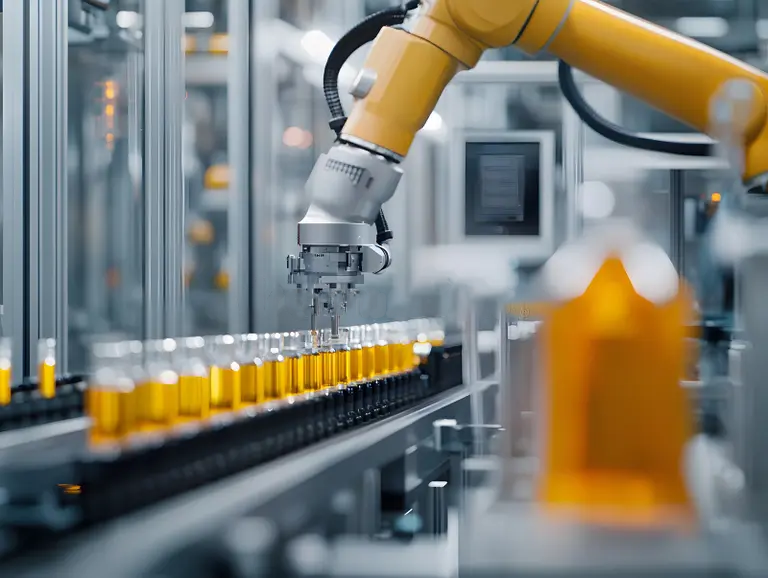AI Visual Inspection

Keeping reasonable quality standards while staying on pace with the speed of production in today’s world of manufacturing is always a challenge. Inspection via human workforce usually suffers due to tiredness, discrepancies, or overall ineffectiveness. AI-powered visual inspection is changing the landscape of quality control for the better. A significant impact is already clear through unmatched accuracy, faster inspection, and streamlined operations.
What AI Visual Inspection Entails?
The seamless integration of machine learning and computer vision makes it possible to make real-time evaluations of items and check for any discrepancies with AI Visual Inspection. Today, entire manufacturing processes can rely on specially trained AI systems to perform quality checks. These models are trained on vast datasets built with numerous images depicting rare defects in components and products. The models are managed with high-resolution cameras which detect even the minutest flaws ensuring top-notch quality in all products.
How AI Visual Inspection Works?
With its many sophisticated capabilities, the AI model is equipped to perform inspections using image comparison software. The entire process consists of many steps.
- Image Acquisition: High-definition cameras mounted on devices in the production line capture images of the products.
- Defect Detection and Classification: The system compares the images to a set of standards and detects defects such as scratches, cracks, components not in the right place, and parts that are missing.
- Decision Making: AI then sets the type of discrepancy as well as if the quality standards were met; if not, the product will either be set to be discarded or refurbished.
- Continuous Learning: The model conducts further learning through reprogramming with tested new defect designs to ensure thorough detection.
Industries Benefiting From AI Visual Inspection
1. Manufacturing & Automotive
Undoubtedly, AI visual inspection has superior functionality in the manufacturing and automotive industry, precise fitting of complex components during the assembly of vehicles and electronics is guaranteed, which in turn boosts safety and prevents recalls.
2. Pharmaceuticals & Medical Devices
In artificial intelligence (AI) visual inspection, especially in regulated industries, even the most minute flaws in packaging, labelling, and medical instruments are identified, so that there is no breach in compliance.
3. Food & Beverages
AI aided inspection plays a crucial role in the healthcare industry by identifying foreign substances, packaging defects, and any other anomalies that would pose a threat to consumer safety, and put food hygiene at stake.
4. Semiconductor Industry
Defects in silicon wafers, microchips, and other parts of high-performing electronic devices are identified through AI visual inspection to ensure that high standards and accuracy are maintained at all times.
Benefits of AI Visual Inspection
Increased accuracy: AI guarantees the highest level of precision by detecting, and hence, removing the possibility of human error in flaw identification.
- Greater efficiency: Defects that would otherwise lead to production delays can be eliminated through the speedier automated inspections.
- Reduction in costs: AI inspection minimises defects, which greatly saves on waste materials, rework, and recalls.
- Flexibility: Any AI system can be integrated with multiple different production lines or products easily.
- AI analytics provides valuable additional information that enables AI experts and manufacturers to make changes to processes or quality control measures to continuously improve.
The Future of AI Visual Inspection
As edge computing and deep learning technologies become more advanced, the integration of AI Visual Inspection Systems will become more commonplace due to enhanced real-time processing capabilities. Companies utilising these technologies have seen a rapid increase in quality assurance and operational performance.
Businesses seeking to implement computer-vision-driven quality inspection systems can take advantage of advanced solutions like those provided by xis.ai in which the processes are automated with AI to improve production and manage quality control.
AI visual inspection is more than a technology; it is groundbreaking for industries with a focus on quality and efficiency.
- Questions and Answers
- Opinion
- Motivational and Inspiring Story
- Technology
- Live and Let live
- Focus
- Geopolitics
- Military-Arms/Equipment
- Segurança
- Economy
- Beasts of Nations
- Machine Tools-The “Mother Industry”
- Art
- Causes
- Crafts
- Dance
- Drinks
- Film/Movie
- Fitness
- Food
- Jogos
- Gardening
- Health
- Início
- Literature
- Music
- Networking
- Outro
- Party
- Religion
- Shopping
- Sports
- Theater
- Health and Wellness
- News
- Culture


